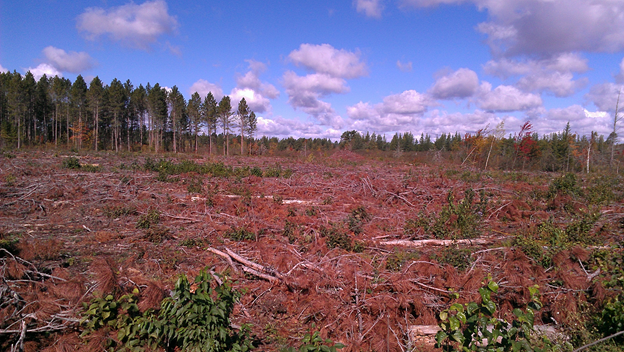Overview
A timber sale was conducted in 2012 using a clearcut regeneration system in a previously red pine dominant stand with three areas of different skidding and biomass/slash retention treatments. The current stand is comprised of young jack pine seedlings that were planted in September and October of 2012 after the harvest. Due to drought and deer herbivory replacement plantings occurred in spring 2013 and 2014. Natural regeneration appears to be positively correlated with the full-tree skidding treatment areas; in other words, full-tree skidding appears to promote regeneration success regardless of slash retention level.
Pre-treatment stand description and condition
Stand establishment and management history:
Historical stand inventories suggest this stand was established around 1933 as a “pine plantation,” established in what was documented in 1929 as an open field, likely used for haying (figure 9). The 1939 inventory suggested red pine was the dominant tree species with additional components of jack pine and aspen (figure 10). The first documented harvest was in December of 1968, following a “cut as marked” treatment, 7 cords per acre of jack pine and bit of aspen were harvested - no red pine was removed. In 1988, a thinning was completed of the stand removing red pine bolts and pulp, red and white pine saw timber, and small amounts of aspen, balsam fir, and white spruce. In 2005 the cover type map reported a fully stocked small sawtimber red pine stand. In the 2012 clearcut, harvest volume recorded 69% of merchantable volume was red pine sawlogs or bolts, 23% was mixed pine pulp, 4% jack pine bolts, and 3% white pine sawlogs.
Pre-treatment forest health issues:
Soil moisture levels are low due to the soil texture; the stand was facing drought conditions prior to and after planting.
Landowner objectives/situation:
There were two goals. The first goal was to harvest a stand of profitable red pine to allow room for another fire-adapted native conifer, jack pine (Pinus banksiana) to restore a forest type that used to cover the property of the Cloquet Forestry Center from the 1920s to the 1950s. The second goal was to explore how different slash treatments influenced seedling establishment.
Silviculture Prescription
Use a clearcut silvicultural system to regenerate the stand to even-aged jack pine. The coarse woody debris and slash were left by the timber harvesting company according to the following treatments. The operation area was divided into three different skidding/processing plus biomass/slash retention treatments to observe their effects on regeneration and early-successional community development:
1) Full tree skid, process (de-limb tree) at the landing, no slash returned;
2) Full-tree skid, process at the landing, some slash hauled back to harvest area and distributed evenly;
3) Process at the stump (tree felled by hand, slash was cut off where the tree was felled to mimic cut-to-length system), bole-only skid, all slash retained.
Natural regeneration will be allowed, and artificial regeneration will occur at a count of 860 jack pine seedlings per acre. Herbicide and fall protection treatments are prescribed until jack pine is able to survive on its own. Refer to figure 1 for a pre-harvest map of the treatment area.
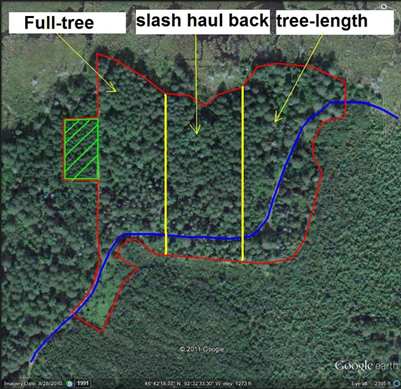
Figure 1: Pre-harvest sale area map from 2011 imagery with sale area outlined in red, proposed slash treatment locations, a regularly maintained forest road running through the sale area in blue, and a light thinning area in green-with-hashes
What actually happened during the treatment
The clearcut occurred between April 1 – 25, 2012 using the different processing, skidding, and biomass retention treatments. Initial planting of 2-0 jack pine planting stock at a density of 860 seedlings per acre occurred in October of 2012. Drought conditions and deer browse caused high levels of mortality in the initial planting. As a result, supplemental plantings of jack pine in the spring of 2013 and 2014 occured at 571 trees per acre and 800 trees per acre, respectively. In order to combat the browse, bud caps were placed on the terminal shoots starting in fall of 2013 and continued through the winter of 2016-17; when assessed for budcapping in the fall of 2017 they were considered free to grow and not in need of budcaps.

Figure 2: Post-harvest photograph of the harvest area in 2012. The processed at the stump/full slash retention treatment in the foreground. Image collected facing west while standing on the from forest road.
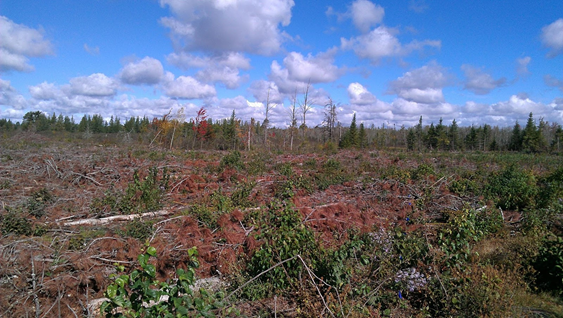
Figure 3: Post-harvest photograph of the full-tree skid with slash hauled back to site (medium slash retention) treatment area from the south looking north. Picture taken in 2012.
Table 1: species, product, harvest volume, and gross income from consumer scale sale tickets. Converted from cords and thousand board feet (mbf) to cubic feet (ft3) using the following conversions: 1cd = 128 ft3; 1 cd = 0.5 mbf.
| Species | Product | Harvest Volume (ft3) | % of Total Volume | Gross Income ($) |
| Red pine | Sawlogs | 55.72 | 0.2 | $18944.80 |
| Red pine | Bolts | 16439.04 | 54.7 | $5137.20 |
| Jack pine | Bolts | 2170.88 | 7.2 | $593.60 |
| White pine | Sawlogs | 4.42 | 0 | $1236.20 |
| Mixed pine | Pulp | 11371.52 | 37.9 | $2221.00 |
Post-treatment assessment
Jack pine is observed to have most successfully regenerated in the areas that received full-tree skidding and least successful where trees were processed at the stump (see figure 2). No biomass retention versus medium or high biomass retention does not appear to matter to regeneration as much as full-tree versus bole-only skidding. It is thought that a good amount of the regeneration in the full-tree skidding areas is actually of seed origin – mostly jack pine with smaller densities of red and Scots pine – that is augmenting the artificial regeneration. Where this seed is from or when it seeded in is not totally clear but a few theories have been put forth. The most likely theory it is that the full-tree skidding scarified the soil and the seed was from cones dropped from mature trees that were harvested; jack pine was rare in the pre-harvest forest, which may explain the heterogeneous spatial arrangement of the regeneration. Another theory is that the seed could be dispersed from the artificially regenerated jack pine, which are documented to start producing viable seed as early as age 3-5. Another theory is that the seed is coming in from adjacent stands, which is unlikely because nearly all the surrounding stands are dominated by red pine rather than jack pine. A final theory is that it is actually artificial regeneration from 2012-2013 that were thought to have been killed due to drought or white-tailed deer herbivory. Regardless, it is thought that the soil scarification by full-tree skidding created both space for natural regeneration and helped reduce early competition for artificial regeneration.
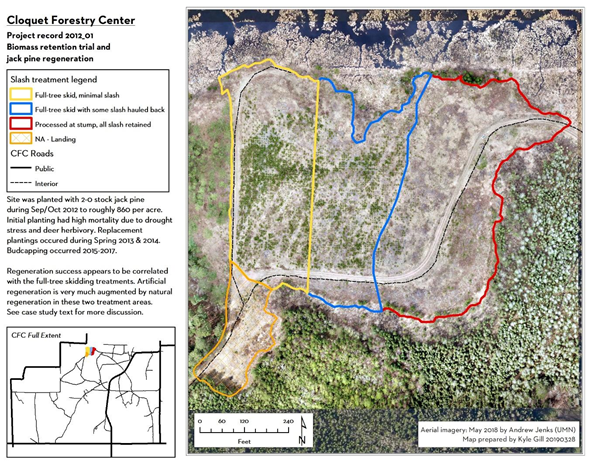
Figure 4: Sale area map including aerial photography of the treatment area collected in May of 2018 before leaf-out, location of the three different skidding plus slash retention treatments, and a brief description of the regeneration efforts.
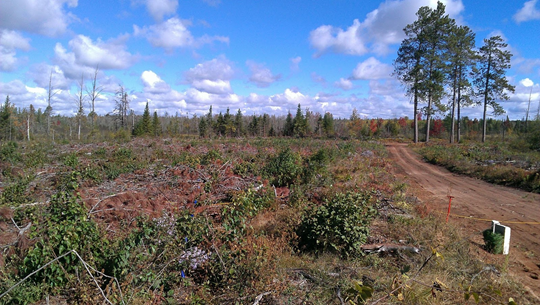
Figure 5: Post-harvest photograph in 2012 of the processed at stump/full slash retention treatment area from the south looking north.
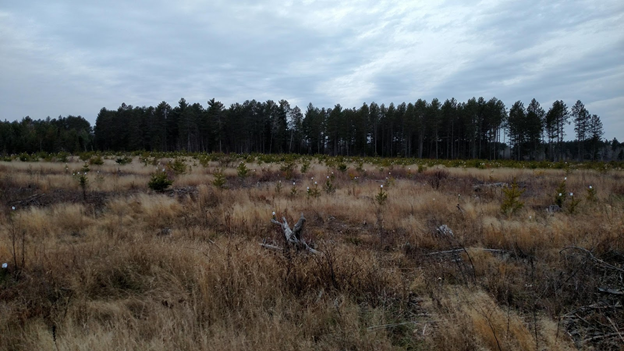
Figure 6. Sale area in November 2016 facing west with the processed at the stump, full biomass retention treatment in the foreground. This photo also demonstrates that the nearby mature stands are primarily dominated by red pine.
Plans for future treatments
Continue to monitor the trials. More formal regeneration surveys through on-the-ground seedling counts in systematically spaced 1/100th acre plots. These will be compared with regeneration surveys conducted using high-resolution aerial photography from drones. Drone flights will use 80-90% overlap in order to eventually use the imagery for photogrammetry to maximize ability to collect tree height and density data from aerial image data.
Costs and economic considerations
The total estimated value of the timber harvest was $27,545.00 and addendum II required a 30% down payment of $8,263.50. Total revenue for the sale was $28,132. Bell pole, Inc. bought and administered the sale and Berthiaume Logging, Inc. conducted the operations. Total seedling and planting costs were not well-documented.
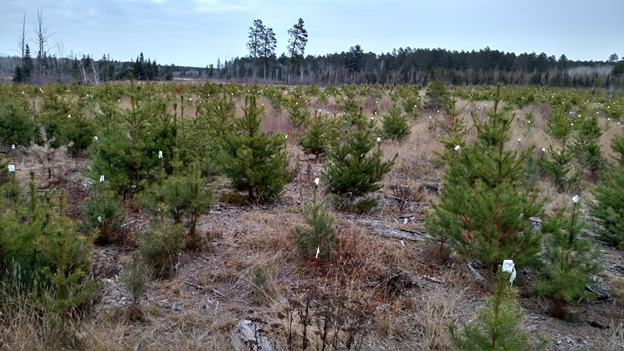
Figure 7. Sale area jack pine regeneration in November 2016. Photo collected facing northeast from within the full-tree skidding and no slash retention treatment.
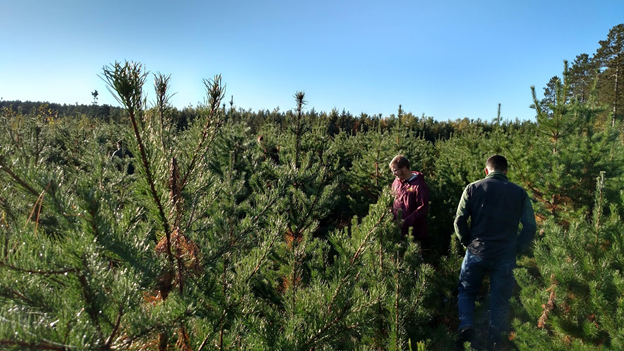
Figure 8: Sale area jack pine regeneration within the full-tree skidding no slash retention treatment in November 2017. This photo was collected facing south from within one of the highest-density groups of jack pine regeneration.
Other notes
Tony D'Amato was responsible for the design and implementation of this study. He is now a professor and director of the forestry program at the University of Vermont.
Citation for the historic inventory maps:
Cloquet Experimental Forest Compartment Inventory Book. University of Minnesota Libraries, University Archives., umedia.lib.umn.edu/item/p16022coll405:367. Accessed 30 April 2019
Summary / lessons learned / additional thoughts
Full-tree skidding appears to be more beneficial than process-at-the-stump operations for both natural and artificial jack pine regeneration. Full-tree skidding scarified the soil, reducing competition for planted seedlings and opening growing space for natural regeneration in areas with open mineral and reduced upper-soil-surface (less than five inches) root competition. Areas that received the process-at-the-stump treatment with full biomass retention appear to be very under-stocked with tree regeneration. It is thought that this space will inevitably grow into a fully-stocked stand, though this could take five to 50 or more years. Budcapping jack pine appears to increase the survival of regeneration. However, it is not fully known if the jack pine that were thought to be dead due to herbivory were 1) fully dead or 2) if a lateral survived and took over the role of the leader; this latter theory was suggested by one of the prior CFC managers who had 40 years of field forestry experience.

Figure 9: the historic Cloquet inventory circa 1929. The treatment area is within Blair Field in the upper lefthand corner.
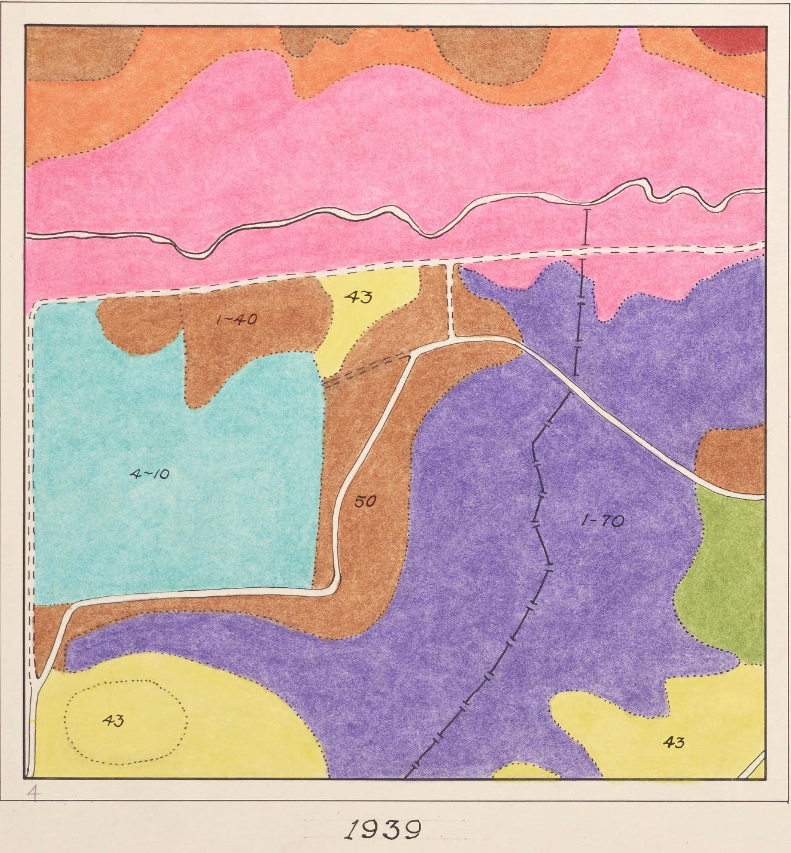
Figure 10: By 1939 Blair Field had transitioned to a conifer-hardwood cover type, denoted by the powder blue color.
Submitted by
Peter Diede
Kyle Gill
Kyle has been the CFC forest manager and research coordinator since 2015. He enjoys exploring stand development, silviculture, and the inherent biases that we bring to decision making. He feels it is important to see himself and other humans as community members of forested and non-forested ecological communities.
